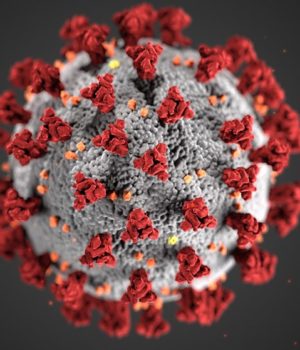Written by Robby Mangum
The name, Coronavirus, is frightening. It evokes images of zombie outbreaks or Mexican beer. However, the best way to alleviate fear is through knowledge, and we’re here to deliver some facts.
Coronavirus actually isn’t the Coronavirus. Coronaviruses are a subfamily of viruses named for their shape: spherical, with spike shaped peplomers which resemble the sun’s corona. According to the WHO, coronaviruses typically cause affect the respiratory system, and symptoms include coughing, fever, and breathing difficulties. Another famous outbreak of a coronavirus was SARS.
The symptoms of this specific Coronavirus, called COVID-19, include fever, coughing, and shortness of breath, according to the CDC. Only 16% of Chinese cases have resulted in severe illness requiring hospitalization. The elderly and those with existing medical conditions-heart disease, lung disease-are at the most risk.
The CDC recommends that, to better protect everyone, we become familiar with the necessary steps to prevent the spread of disease. The most notable prevention methods are simple, everyday measures. Avoid close contact with people who are displaying signs of infection. Try not to touch too many public surfaces, and wash your hands for 20 seconds with soap and water at least five times a day. If you show signs of illness, try to stay away from people and contact a healthcare provider.
As of the CDC’s situation report for March 9th, there have been 27, 000 reported cases of COVID-19 and less than 4, 000 deaths globally. The CDC began monitoring the situation on the 21st of January. While these numbers may seem dire, they aren’t that bad. This flu season, October 1st-February 29th, resulted in between 34,000,000 and 49,000,000 cases and between 20,000 and 52,000 deaths in the United States alone. Of course, this isn’t to say that we should be more worried about the flu. Instead, we shouldn’t be too worried about COVID-19.
Preventative measures for the influenza are almost identical to preventative measures for COVID-19. Stay away from people displaying symptoms, wash your hands often and thoroughly, and avoid touching your eyes and mouth. Finally, be sure to get your vaccinations.
Ultimately, the CDC encourages the public to stay informed when it comes to public health situations, and to be sure to use appropriate news resources. It’s always a good idea to stay abreast of current events. However, we shouldn’t just start practicing good public health strategies when a scary exotic disease appears. Taking the measures discussed above can help us to prevent the spread of disease all the time.




